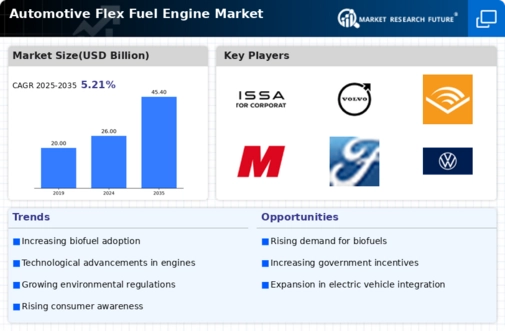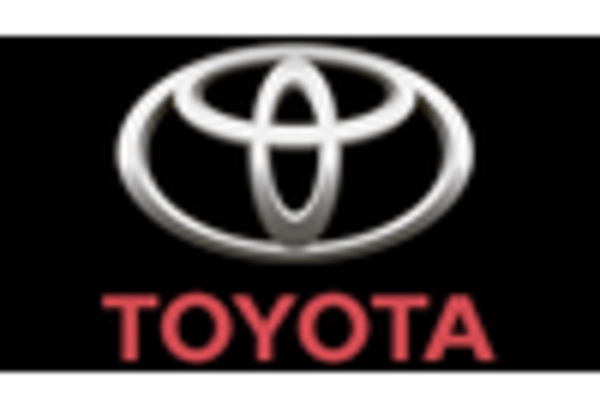Market Share
Automotive Flex Fuel Engine Market Share Analysis
The Automotive Flex Fuel Engine Market is experiencing notable trends as the automotive industry navigates the changing landscape of fuel options and environmental considerations. A significant trend in this market is the increasing adoption of flexible fuel engines designed to run on a blend of gasoline and ethanol, typically referred to as E85. As the automotive sector places greater emphasis on sustainable and renewable fuel sources, flex fuel engines offer consumers the flexibility to choose between conventional gasoline and ethanol, contributing to a more diverse and eco-friendly fuel landscape.
Moreover, the market is witnessing a surge in the production and promotion of flex fuel vehicles (FFVs) by automakers. FFVs are equipped with engines capable of running on gasoline, ethanol, or any mixture of the two. This trend aligns with the industry's commitment to reducing greenhouse gas emissions and meeting stringent fuel efficiency standards. Automakers are increasingly incorporating flex fuel technology into their lineup, providing consumers with a broader range of choices to align with their preferences and environmental considerations.
Another noteworthy trend is the growing government support and incentives for the production and consumption of ethanol-based fuels. Many countries and regions are implementing policies and subsidies to promote the use of biofuels, including ethanol. These initiatives aim to reduce dependence on fossil fuels, decrease carbon emissions, and stimulate the growth of the automotive flex fuel engine market. Government backing plays a pivotal role in encouraging both consumers and manufacturers to embrace flex fuel technologies.
Furthermore, the market is responding to increased consumer awareness and environmental consciousness. As consumers become more informed about the environmental impact of their vehicle choices, there is a growing interest in flex fuel engines as a more sustainable option. The ability to use ethanol, a renewable and domestically produced fuel, resonates with environmentally conscious consumers seeking to reduce their carbon footprint and contribute to cleaner air quality.
Additionally, advancements in engine technology and fuel management systems are shaping trends in the automotive flex fuel engine market. Automakers are continually improving the efficiency and performance of flex fuel engines, optimizing combustion processes to ensure smooth operation with varying ethanol-gasoline blends. Advanced electronic control systems allow these engines to dynamically adjust parameters based on the fuel mixture, maximizing efficiency and power output.
Moreover, the market is witnessing collaborations between automakers and biofuel producers to create a more comprehensive ecosystem for flex fuel vehicles. Partnerships between the automotive and biofuel industries aim to address challenges related to fuel availability, infrastructure, and consumer awareness. These collaborations contribute to building a more robust and integrated support system for flex fuel vehicles, fostering market growth and sustainability.
In conclusion, the Automotive Flex Fuel Engine Market is undergoing transformative trends driven by the industry's commitment to sustainable fuel options, government support for biofuels, increased consumer awareness, advancements in engine technology, and collaborative efforts between automakers and biofuel producers. The adoption of flex fuel engines, the promotion of flex fuel vehicles, and the continuous improvement of engine efficiency underscore the automotive sector's dedication to providing environmentally friendly choices for consumers. As the market continues to evolve, flex fuel engines are positioned to play a significant role in the transition towards more sustainable and diverse fuel solutions in the automotive industry.

















Leave a Comment